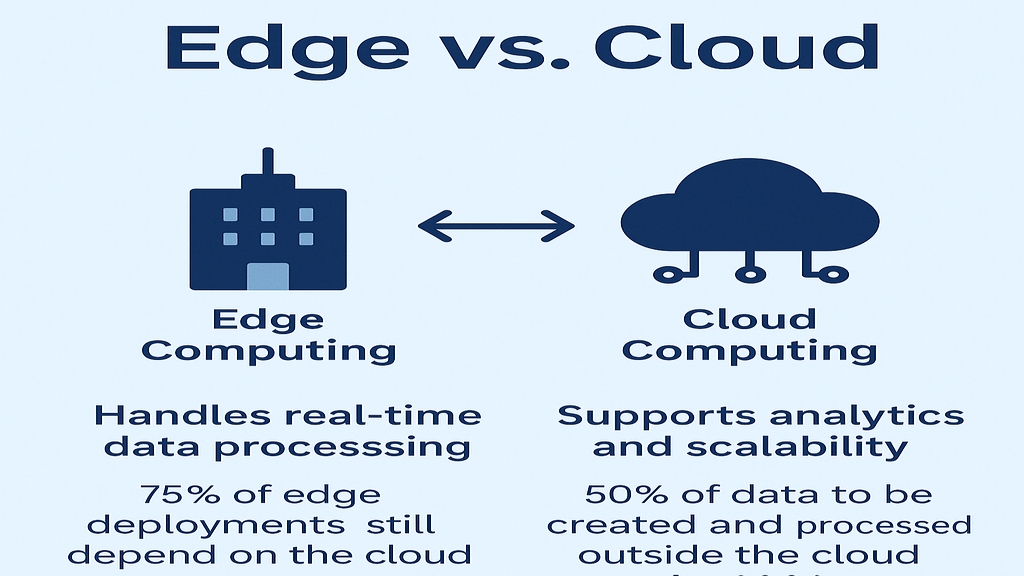The way people, systems, and objects interact has been altered by the Internet of Things, which has also introduced connection and real-time data interchange into daily life. Latency, bandwidth constraints, and network congestion make customary cloud computing solutions extremely difficult to manage as a result of the exponential growth in data volume and the proliferation of IoT devices. Enter Mobile Edge Computing (MEC) — transformative technology that brings computational resources closer to the network’s edge, solving problems with these issues and greatly boosting the performance of IoT applications.
The Problems of Traditional Cloud-based IoT
Traditional architectures of IoT rely on cloud-central computing, where most IoT devices send data far-off to data centers that handle processing and analysis. Despite its effectiveness for various uses, this model also possesses inherent limitations:
High Latency:
As the data travels vast miles, it is not tolerable for applications that require time sensitivity as in autonomous vehicles or remote healthcare.
Bandwidth Bottlenecks:
The IoT devices increasing in number creates voluminous data, which leads to network congestion along with inefficiency.
Limited Scalability:
Centralized processing is unable to cope with the growth of the IoT environment at a rapid pace.
Data Privacy and Security:
Transmission of sensitive data over large distances increases the potential for breaches.
This reveals a crucial demand for decentralized computing—the area MEC is destined to serve.
What is Mobile Edge Computing?
Mobile Edge Computing is an architecture where computation, storage, and networking capabilities are brought near devices that generate data. Thus, instead of a data center, the approach MEC uses would have near-real-time processing and analysis of data.
Key Ways MEC Improves IoT Performance
Reduced Latency MEC processes data locally, thus eliminating the need for data to travel to distant cloud servers. In addition to decreasing round-trip time, this guarantees ultra-low latency, which is essential for applications like telemedicine, smart transportation, and industrial automation.
Improved Bandwidth Efficiency
MEC shifts data processing from the central cloud to the edge, thus reducing the volume of data that needs to be moved across the network. Consequently, this minimizes network congestion and increases the scale of devices and traffic on the networks.
Improved Real-Time Processing
With computational resources closer to the data source, MEC enables real-time decision-making and analytics. For IoT applications that require response times, such as predictive maintenance in manufacturing or real-time monitoring in smart cities, the capability is essential.
Better Scalability
MEC’s distributed architecture allows more scalable networks by adding an edge node as needed for the growing number of devices. This flexibility supports both the growing number of devices and ensures consistent performance during increased demand.
Improved Data Privacy and Security
The processing of sensitive data locally in MEC reduces the exposure of information to potential cyber threats during transmission. This localized approach enhances data privacy and security, making MEC particularly suitable for applications in healthcare and finance.
Energy Efficiency
MEC reduces the energy used to transmit vast amounts of data over long distances. In addition, it empowers IoT devices to transfer computational loads to close-by edge nodes that reduce their power usage and thus extend their longevity.
Application of MEC in Real-Life IoT Scenarios
Smart Cities:
MEC supports IoT applications like traffic management, smart lighting, and environmental monitoring through real-time data analysis and decision-making.
Healthcare:
MEC enables remote patient monitoring and telemedicine through low-latency data transmission and processing, critical for life-saving decisions.
Autonomous Vehicles:
Self-driving cars rely on MEC to process sensor data in real time, ensuring safe and efficient operation.
Industrial IoT:
In manufacturing, MEC powers predictive maintenance and automated quality control by providing immediate insights from machine data.
Retail:
MEC enables in-time customer experience personalization, thus enabling local IoT sensor data processing in inventory management.
Future of MEC and IoT
With the expanding landscape of the Internet of Things, MEC will be ever more crucial. Further impacts on MEC are set to come with emerging technologies, such as 5G, that can process data more quickly and provide better connections. In this context, MEC and IoT can spur innovation across various sectors to pave the way toward smarter and more connected ecosystems.
Conclusion
This mobile edge computing is going to be a game-changer for IoT; in fact, it would end traditional cloud computing with limitations and open new ways toward performance, scalability, and security. By bringing computation closer to the edge,MEC improves the efficiency and responsiveness of IoT applications in meeting the demands of the hyper-connected world. By embracing MEC, organizations position themselves at the vanguard of technological advance and are prepared to fully exploit the potential of IoT.




3 thoughts on “How Mobile Edge Computing Enhances IoT Performance”